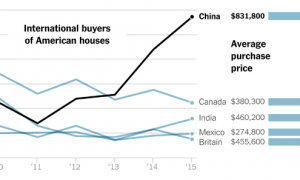WASHINGTON — For 2014, the first year she got health coverage through the Affordable Care Act, Gail Galen chose a plan from a new nonprofit insurer, Oregon’s Health CO-OP. But the price jumped for 2015, so Ms. Galen switched to a policy from a different company, LifeWise Health Plan.
Now, with open enrollment for 2016 underway, she is preparing to leap to her third insurer in three years — and stocking up on whiskey, she says, only half in jest, as she braces for another round of shopping on the federal insurance marketplace.
“Every year I feel like I’m starting all over again, and I just dread it,” said Ms. Galen, 63, of Warrenton, Ore. “My stress level just shoots up.”
Over the past two years, the Affordable Care Act has created entirely new markets for
health insurance,
and a new way of buying it, via online exchanges that allow comparison shopping. They have brought coverage to nine million people, many of whom could not afford it or were rejected by insurers before. But these new markets have also seen sharp price swings, or changes in policies, that are
driving many consumers to switch plans
each year.
A family talked through plan options in San Francisco last week, on the first day of open enrollment for 2016. The annual changes in plans and prices are a result of the many unknowns in the new markets.
The Obama administration is encouraging switching as a way to avoid steep increases in premiums — and to promote competition among insurers, as the law intends. Next year will be no different: The price of plans will rise in most states, and the administration says that 86 percent of people who currently have coverage through the federal exchange can find a better deal by switching.
“This may be just one of those environments where there’s a new normal,” said Sabrina Corlette, a professor at the Health Policy Institute of Georgetown University.
For many consumers, the volatility in the markets has been a source of anxiety and disruption. To have any choice at all is a welcome development, many say. But switching plans is also becoming an unwelcome ritual, akin to filing taxes, that is time-consuming and can entail searching for new doctors and hospitals each year.
“I don’t have a regular doctor anymore, so I avoid going,” said David Saphier, a self-employed technology consultant in Manhattan who will be switching to his third exchange plan for 2016.
Some experts have raised concerns that frequently switching doctors could result in worse health care, though carefully controlled research on the issue is sparse.
Dr. Joseph Ladapo, a physician and health policy researcher at New York University School of Medicine, said it could be problematic in part because new providers often cannot get a patient’s old medical records. Doctors also may feel less invested in the health of patients they believe are with them only for the short term, he added.
“It’s going to be a challenging issue to really parse out,” Dr. Ladapo said. “But it’s a very important one, and in general, any breaks in continuity that happen as a result of these narrowing networks or plan changes are probably not in the best interest of patients.”
The annual changes in plans and prices are a result of the many unknowns in the new markets. Insurers are changing their pricing, often significantly, year to year as they struggle to figure out how healthy or sick their new customers are. In some cases, insurers tried to get a foothold in the market with unsustainable low prices that they now must raise.
An additional factor for 2016 is the closing of a dozen nonprofit cooperative insurers that had more than 500,000 customers around the country. Those consumers will have no choice but to find a new plan, as will others whose insurers are leaving the exchange markets because they were losing too much money.
In Nashville, Alyssa Bernhardt learned recently that her plan from BlueCross BlueShield of Tennessee would rise to $115 a month even after her federal subsidy, from $45. She logged onto
HealthCare.gov last week and found a comparable plan that will cost only $40 a month. She has switched plans every year since the exchanges opened, though she has managed to stay with Blue Cross Blue Shield all along.
“It’s so confusing,” said Ms. Bernhardt, 28, a graduate student and part-time consultant. “It would be a lot easier if I could just renew the same plan.”
Last year, many people did just that, taking no action and letting their coverage automatically renew for 2015. Still, about half of returning HealthCare.gov customers at least shopped around before settling on a health plan, and about 25 percent switched — far more than many experts predicted. Those who switched insurers but kept the same level of coverage ended up saving about $490 over the course of the year in premium costs, according to a report by the Department of Health and Human Services
As much as they dislike switching plans, people like Ms. Galen, who has a history of
skin cancer
, say it is far preferable to what they faced before the health law took effect. Then, many people with medical conditions could not get insurance or had to pay much more for it, and they clung to whatever coverage they could get because if they tried to switch to a different insurer, they would most likely be rejected.
Mary Stuart, 64, of Omaha, has already switched to Assurant from Blue Cross and Blue Shield of Nebraska, and so far has been able to keep her doctors. Now Assurant is leaving the exchange market, and Ms. Stuart is intent on finding a new plan that will cover the ophthalmologist who treats her
macular degeneration
, a serious eye disease.
“I’m like, oh God, here we go again,” said Ms. Stuart, who does not receive a premium subsidy and pays $890 a month for her current plan.
On the other hand, she said, “With my medical issues, to get with another insurer pre-Obamacare would have been really hard. So even though I’m bouncing and bouncing around, in some respects the current situation is so much better.”
If Ms. Stuart has a Zen-like approach to the shop-and-switch routine, Ramon Cinco, a middle school teacher in Houston, said he is approaching it “in panic mode.” He is switching plans not to get a better deal, but because his current plan with Cigna, which allows his family to see any doctor without a referral, is being discontinued.
Mr. Cinco, 43, switched to Cigna this year after being frustrated with his 2014 plan from Aetna, which he said had too narrow a provider network to be useful. Now, he said, he is likely to switch back to Aetna for 2016, to a plan that seems to have a narrower network of hospitals than he has access to now.
“I wasn’t expecting to make a switch for 2016,” Mr. Cinco said. “I’m very happy and pleased with my plan, and this came as a big shock.”
As for Ms. Galen, her insurer, LifeWise, is discontinuing her current plan and offering her a similar one with premiums that are 38 percent higher over all. She will get a bigger subsidy next year because of rising rates in her state, so her share of the premium would increase by only $27 a month. But she would also face higher out-of-pocket costs for visiting the doctor, and a higher out-of-pocket limit. And the new plan does not appear to cover her current doctors, she said.
That leaves her with more than a dozen choices from six insurers, which she has begun researching. She wants to make sure she can stick with the dermatologist she has been visiting since her skin cancer diagnosis.
“It’s a constant, background nagging feeling of a chore undone,” she wrote in an email last week. “And still, it’s a huge improvement over the old days! I didn’t have to shop at all then; I was stuck with the same rip-off, narrow policy.”




















